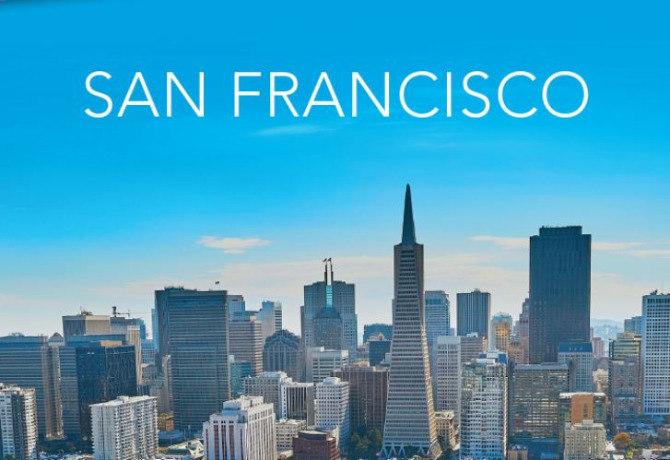In terms of scale, the San Francisco agency scene may not compare to New York’s, but despite the smaller pool, it offers a great mix of creativity and tech.
For MEC, the same global leadership principles apply regardless of location, according to its client lead and digital product development, Kristine Segrist. “That said, the common thread across the global businesses we lead from San Francisco is an emphasis on digital, data-driven marketing and highly nimble, adaptive ways of working,” she adds.
Segrist says the agency’s Bay area base aims to service clients aligned with media associates based on the West Coast, while utilising the location to better tap into the plethora of local venture capital and start-up communities in order to identify compelling new technologies to leverage against client goals.
“Agencies in San Francisco form strong connections with partners in Silicon Valley and the broader Bay area, and we have the opportunity to engage with these partners on their own turf – at their headquarters,” says Segrist, who feels the proximity allows teams to get closer to product-driven opportunities, and to observe company cultures first-hand and engage in collaborative working.
According to Segrist, the companies and agencies based in San Francisco reflect the larger culture in this market, focused on constant testing and experimentation.
If the global media community can learn something from the Bay area, it would be not to hold too tightly to convention. “By testing new approaches and challenging standard ways of working, it is possible to drive fresh thinking and innovation,” Segrist says.
“The market will continue to pave the way for dramatic shifts in the media landscape – focused on advancing a data-driven, digital-first approach that is rooted in technological innovation and continual change,” she adds.
“The culture in this marketplace is to race to the future first.”
Flex and pivot
PHD West president Anne-Marie Schaffer also feels that the San Francisco agency scene sprints to keep up with the ever-developing tech. “It really is the centre of technology and as such causes agencies to really have to understand – to flex and pivot and work nimbly – and the old traditional ways of working really have to be thrown out when working with companies.”
According to Schaffer, many of the companies in the area are venture-capital-backed, so do not have standard processes. Indeed, many have never worked with agencies before, whether that be from a media or advertising perspective.
“Media is not as nimble as we’d love it to be, it’s very easy to drop a newspaper insertion sometime this week, but to develop really outstanding, innovative ideas takes time, and to bring them to market sometimes can take weeks if notmonths, so it requires some advanced thinking and strategic development to bring ideas to life,” Schaffer says.
“Unfortunately, the challenge is that sometimes companies are working in a very fast-paced environment where their business quite frankly is moving at a faster pace than they are actually able to move.
“You know, where you used to have four to six weeks to develop a media plan?” she says. “That’s just unrealistic working with a lot of these companies, so it requires us to be super-nimble, super-quick, super-smart and be able to bring ideas to market within just a couple of days.”
Schaffer feels that the techy tag of Silicon Valley is more relevant than ever, with the landscape expanding down to Playa Vista, creating ‘Silicon Beach’, which she says is really well connected to San Francisco and New York. “New York is the centre of the universe in a lot of ways,” she adds.
The West Coast is split between older agencies that constantly reinvent themselves and the newer, independent agencies.
“When you compare the old versus the new, I really think it’s about attitude and, for the agencies out here on the West Coast, having an attitude of a sense of urgency, having people who are fearless collaborators, having people who are just tenacious and want to get work done on behalf of the clients and come up with really great solutions on their behalf,” Shaffer says.
“It’s really important to take risks, but measured risks that make sense and that could, quite frankly, pay off big time for some of our clients”
Looking to the future, Schaffer feels that social is one of the biggest trends she is seeing evolving. “I know for many, many years we’ve heard ‘It’s the year of mobile’ and, five years later, we’re well past that,” she says.
“Mobile is part of everything we do.”
Many of the platforms are moving to self-service models, meaning that agencies are having to understand how different strategies are employed across a range of clients. For example, retail clients may use Pinterest as a more aspirational platform.
“It’s really requiring agencies to understand how their clients would work within those particular platforms and understand what would work best on their behalf,” says Schaffer. “I would say that social is a pretty significant trend right now, as well as thinking about utilising some new technologies that may not have even been brought to the market just yet.
”With the marketplace changing so quickly in the way that technology is influencing media across every media channel, clients don’t have all the answers and are looking to agencies to supply the answers, or at least to help guide them.
“I think it’s really important to take risks, but measured risks that make sense and that could, quite frankly, pay off big time for some of our clients,” says Schaffer.
Virtual working
Looking to the future, Schaffer asks if, as factors such as San Francisco real estate become increasingly expensive, the notion of working virtually will become much more of a reality. “How do teams evolve in a workplace where people may not all be in one hub at one time?” she questions.
“We’re going to continue to see an evolution, not just of how people work, but how we interface with one another, how we use technology to our advantage to be able to stay connected but still deliver on what we need to on behalf of our clients.”
OgilvyOne managing director Roland Deal feels that the future opportunities lie in servicing both B2B and B2C technology start-ups, citing Google’s multi-agency strategy.
“Google doesn’t work with one specific agency, so they’ve got lots of different projects out there with different agencies all vying to do work and doing work,” Deal says. “As some of these other agencies continue to expand their outbound marketing, they’re going to be giving projects and work to smaller agencies, and they build that book of business and start to pitch for new business.
“I do think that’s a vector of growth, really getting in with these early stage, venture-backed unicorns” he adds.
“These large companies are now sitting on a lot of capital and some of that is going to marketing.
“The agencies pick up on that ‘rising tide lifts all ships’ type of thing, so that they’re going to get more success and build on that success.”
According to Deal, the talent pool in the Bay area is very different, with more digital and technology expertise than elsewhere. “Obviously New York has a huge market, but there’s just a lot more of that happening here on the West Coast.”
With a smaller agency landscape than more established media hubs such as New York, a stronger focus exists in San Francisco on culture and innovation in order to attract and retain talent, enhanced by all the groundbreaking tech companies in the market.









